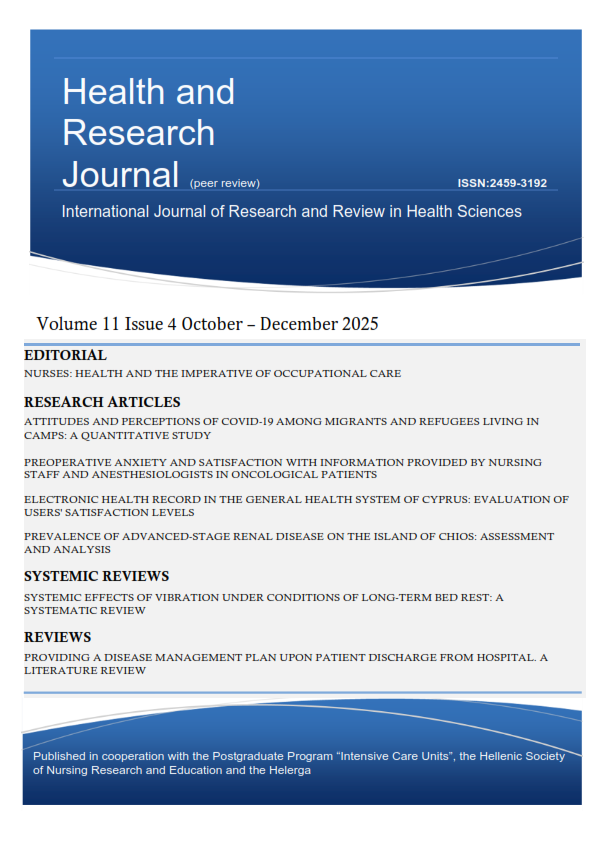Prevalence of advanced-stage renal disease on the island of Chios: Assessment and Analysis

Abstract
Background: Renal Disease is a progressive and often asymptomatic condition that significantly contributes to both morbidity and mortality. The aim of this study is to evaluate the prevalence of Chronic Kidney Disease among the island’s population over a seven-month period, a task of particular relevance given that all patients were exclusively monitored at the General Hospital given the lack of private nephrology care.
Method and Material: A cross-sectional descriptive study was conducted with a sample of patients from the outpatient nephrology clinic and Dialysis Unit of the General Hospital of Chios "Skylitsio" for the period from October 2023 to April 2024.
Results: The majority of patients were men and exhibited higher rates of advanced stages of Chronic Kidney Disease compared to women. The age distribution showed that older patients primarily visited the clinic, accounting for 56.67% of total patients. Stage 3 was the most prevalent (38.65% of total patients). The prevalence of patients undergoing hemodialysis in Chios was identical to the national prevalence (0.12%). The majority of patients were men (72.5%), with the most affected age group being 71–80 years (37.1%). Most had been receiving hemodialysis for 1 to 7 years (80.65%). The leading cause of end-stage renal disease requiring hemodialysis was nephropathy of unknown etiology (37.1%).
Conclusions: The prevalence of chronic kidney disease in Chios was generally higher compared to both the national average and global prevalence.
Article Details
- How to Cite
-
Kalloudis, V., Saisana, A., & Manoulakas, E. (2025). Prevalence of advanced-stage renal disease on the island of Chios: Assessment and Analysis. Health & Research Journal, 11(4), 358–369. https://doi.org/10.12681/healthresj.41581
- Section
- Original Articles
Copyright notice:
The journal "Health and Research Journal" reserves the rights for copyright of the content of the website and also the copyright of the articles published.
By virtue of their appearance in this journal, the articles are free to be used for non-commercial purposes. However, the articles cannot and must not be used in anyway, published elsewhere or modified without any reference to the author and the first publication of the article.


